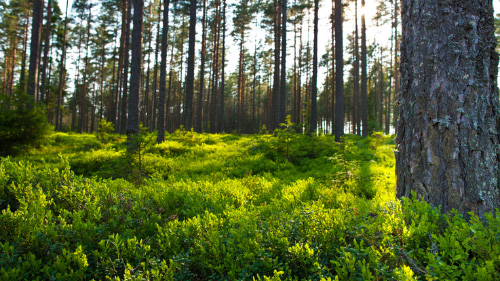Government’s analysis, assessment and research
Bioeconomy promotion needs regulations and research but also people

The Finnish goal of bioeconomy growth requires that several bottlenecks are removed. Reaching the goal needs changes to attitudes and regulations as well as improved skills, according to a research project on bioeconomy and its bottlenecks and steering mechanisms carried out by Pellervo Economic Research PTT and Think Tank e2.
The project studied how the operating environment for bioeconomy should be developed. The most important findings were:
- The goal of bioeconomy growth requires attitude changes and better skills.
- It is important to bring about changes in consumer behaviour. People appreciate environmentally friendly production but only some consumers act based on their values, according to a survey carried out as part of the project.
- There must be investments in research and product development to ensure a favourable growth in the added value.
The project evaluated bioeconomy regulations with regard to tax incentives for wood construction, bioenergy and wood supply. It also studied consumer views on bioeconomy as well as economic impacts of wood-based bioeconomy. The project also reviewed the views of entrepreneurs. One of the key factors affecting the overall progress of bioeconomy in Finland is consumer behaviour.
“Our survey indicates that Finnish consumers appreciate environmentally friendly production, but only some of them are willing to take the trouble to act based on their values, change their behaviour patterns or pay a higher price for choices that conform with their values,” says Matleena Kniivilä, the principal investigator of the project from PTT.
Measures that could influence consumer behaviour include making it easier to make daily choices, influencing prices through taxation and improving the availability of environmentally friendly products.
Greater use of wood does not guarantee bioeconomy success
Wood use in the forestry and energy sectors will increase considerably in the coming years. The study shows that the output and added value will also increase, but their growth will be clearly less pronounced than the growth in wood use. This is because wood use is currently focused on products with a lower level of processing. The calculations are based on long-term production forecasts, which the Ministry of Economic Affairs and Employment commissioned for the preliminary study for the National Energy and Climate Strategy. The selection of products used in the calculations includes basic products in the forestry and energy sectors which currently account for most of wood use. The so-called new biobased products (including transport biofuels and wood construction solutions) were not included in the calculations.
The existing forest industry creates possibilities for developing the so-called new wood-based bioeconomy. However, an increase in wood use alone will not guarantee that new production with a high level of processing will move to Finland. To achieve this Finland needs to invest in research and product development.
Moreover, legislative bottlenecks and a level of uncertainty associated with rules can hamper the promotion of bioeconomy. The project outlines detailed development proposals regarding wood construction, bioenergy and forest taxation. One of the long-term goals for legislation should be the principle of neutrality, meaning for example that all construction material should be treated equally. Wood construction is, however, hampered also by attitudes and lack of skills.
Bioeconomy means products, energy and services based on biomass, deployment of biological processes in production as well as integration of production into natural cycles and ecosystems. The project Kohti biotaloutta: kapeikot ja ohjauskeinojen suuntaus (Towards bioeconomy: bottlenecks and steering methods) is part of the implementation of the 2015 Government plan for analysis, assessment and research. It was a collaboration between PTT, Think Tank e2 as well as Docent Kalle Määttä, LL.D., as a regulation expert.
Five working papers have been published as part of the project. These are available on the PPT website in Finnish with an abstract in English.
- Hietala, J. ja Huovari, J. 2017. Puupohjaisen biotalouden taloudelliset vaikutukset ja näkymät (Economic effects and prospects of wood-based bioeconomy). PTT Working Papers 184.
- Haltia, E. ja Kniivilä, M. 2017. Kuluttajien valinnat ja biotalouden tuotteet (Consumers’ choices and bioeconomy products). PTT Working Papers 182.
- Määttä, K. 2016. Biokaasu, metsähake ja puupolttoaineet. Eräiden uusiutuvien energialähteiden sääntelystä ja sääntelyn kehittämistarpeista (Biogas, forest chips and wood fuel. Current regulation and the need for developing regulation of selected renewable energy sources). PTT Working Papers 180.
- Määttä, K. ja Hietala, J. 2016. Puun tarjonnan verokannustimet: vallitseva oikeustila ja sen kehittämisvaihtoehdot (Wood supply tax incentives: current legislation and its development options). PTT Working Papers 178.
- Määttä, K., Hietala, J. & Jutila, K. 2016. Puurakentaminen: sääntelyn kapeikot ja kehittämisvaihtoehdot (Wood construction: regulatory bottlenecks and development possibilities). PTT Working Papers 177.
Further information about the Government’s analysis, assessment and research at tietokayttoon.fi.
Inquiries: Matleena Kniivilä, Principal Investigator, Forest Economist, Pellervo Economic Research PTT, tel. +358 40 164 8078, matleena.kniivila (at) ptt.fi


